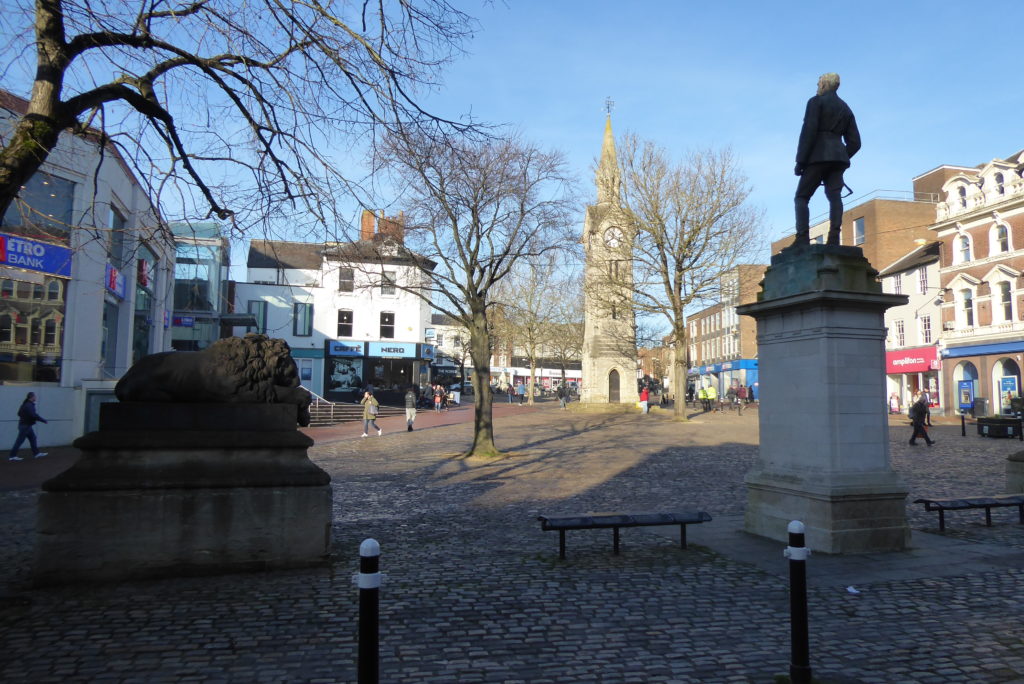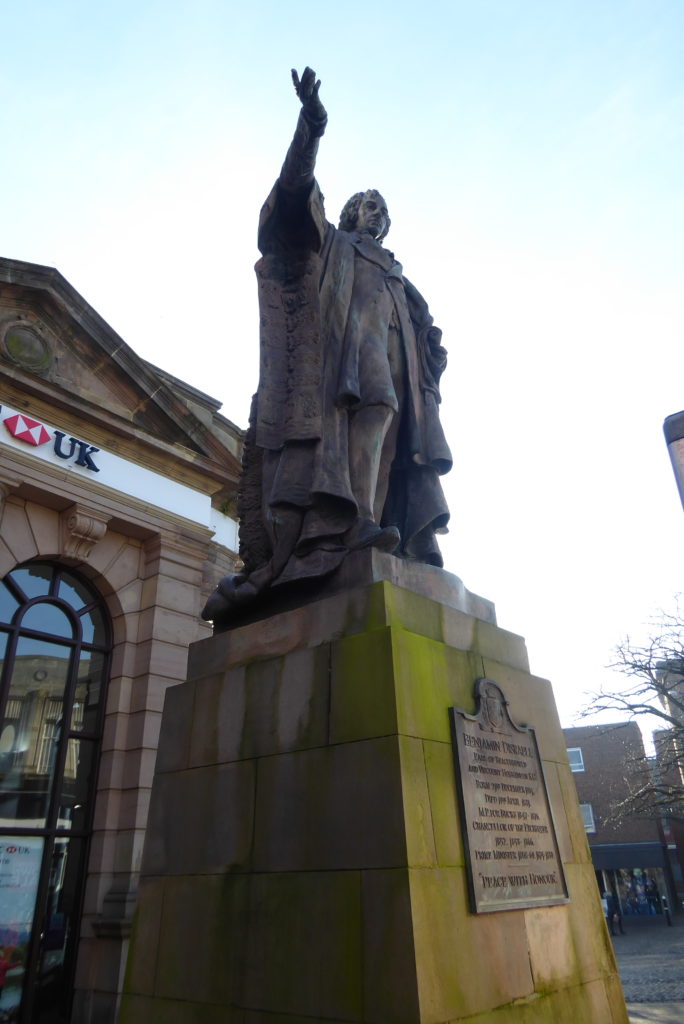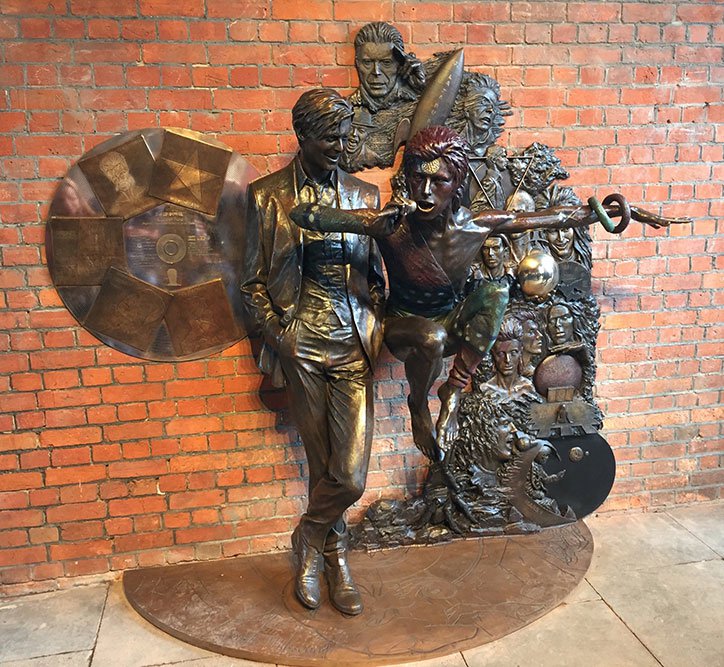Aylesbury, UK
A busy traditional market town, and the county town of Buckinghamshire, Aylesbury has significant buildings dating back to the Middle Ages, particularly around its large central market square with an imposing clock tower, built in 1876.

These days it’s a popular choice for commuters to London, and is a significant transport hub, though its bus station, beneath one of the two 1970s/80s shopping centres, is not a great architectural feature.
Aylesbury has been a major market town since Anglo-Saxon times, the burial place of Saint Osgyth, whose shrine attracted pilgrims. The Early English parish church of St. Mary (which has many later additions) has a crypt beneath. Once thought to be Anglo-Saxon, it is now recognised as being of the same period as the medieval chapel above.
In 1450, a religious institution called the Guild of St Mary was founded in Aylesbury by John Kemp, Archbishop of York. Known popularly as the Guild of Our Lady it became a meeting place for local dignitaries and a hotbed of political intrigue. The guild was influential in the final outcome of the Wars of the Roses. Its premises at the Chantry in Church Street, Aylesbury, are still there, though today the site is used mainly for retail.
Statue of John Hampden in Aylesbury’s Market Square
The town played a large part in the English Civil War when it became a stronghold for the Parliamentarian forces, like many market towns a nursing-ground of Puritan sentiment and in 1642 the Battle of Aylesbury was fought and won by the Parliamentarians. Its proximity to Great Hampden, home of John Hampden has made of Hampden a local hero: his silhouette is on the emblem used by Aylesbury Vale District Council and his statue stands prominently in the town centre.
The grade II* listed Jacobean mansion of Hartwell adjoining the southwest of the town was the residence of Louis XVIII during his exile (1810–1814). Bourbon Street in Aylesbury is named after the king. Louis’s wife, Marie Josephine of Savoy died at Hartwell in 1810 and is the only French queen to have died on English soil.

Statue of Benjamin Disraeli
Prime Minister Benjamin Disraeli was Earl of Buckingham, and a statue of him was unveiled in Market Square in 1923.
Aylebury’s heraldic crest displays the Aylesbury duck, which has been bred here since the birth of the Industrial Revolution, although only one breeder, Richard Waller, of true Aylesbury ducks remains today.
The town received international publicity in 1963 when the Great Train Robbery took place nearby, and the culprits were tried at Aylesbury Rural District Council Offices in Walton Street and sentenced at Aylesbury Crown Court.
A notable institution is Aylesbury Grammar School which was founded in 1598. The original building is now part of the County Museum buildings in Church Street and has grade II* architecture. Other notable buildings are the King’s Head Inn, (which with the Fleece Inn at Bretforton, is one of the few public houses in the country owned by the National Trust still run as a public house).
Aylesbury Waterside Theatre, a new £42 million theatre,[20] with 1,200 seat auditorium, opened in October 2010 and the year before the Bourg Walk Bridge was completed, connecting Southcourt to Aylesbury town centre. The focus of the footbridge is a central concrete pillar with four suspension cables supporting the structure. This bridge forms a central part of the Aylesbury Hub project. Bourg Walk won an Engineering Excellence Award in 2009.
The central Square remains the focus of the town, and the Market still meets on the cobbles there four days a week. Buildings facing onto the Square include (See pictures).
A statue of David Bowie in three different guises in Aylesbury, the town where he debuted Ziggy Stardust.
A live music nightclub in Aylesbury was prominent in the 1960s, 1970s and 1980s – renamed the Friars’ Club in 1969 – which hosted many of the top artists of the time including Jimi Hendrix, the Rolling Stones, Cream, Otis Redding, the Clash, Hawkwind, Queen, Genesis, U2, David Bowie, Talking Heads, Marillion & the Ramones. Friars’ Club celebrated its 40th anniversary in 2009, by holding three special concerts that reflected the various phases of the club’s musical history. The first concert in June featured the Edgar Broughton Band, the Groundhogs and the Pretty Things. A statue of David Bowie in three of his many different guises was unveiled in the Market Square of Aylesbury in 2018, the town where he debuted Ziggy Stardust.

David Bowie Statue
Aylesbury, Buckinghamshire
Aylesbury, UK
A busy traditional market town, and the county town of Buckinghamshire, Aylesbury has significant buildings dating back to the Middle Ages, particularly around its large central market square with an imposing clock tower, built in 1876. These days it’s a popular choice for commuters to London, and is a significant transport hub, though its bus […]
